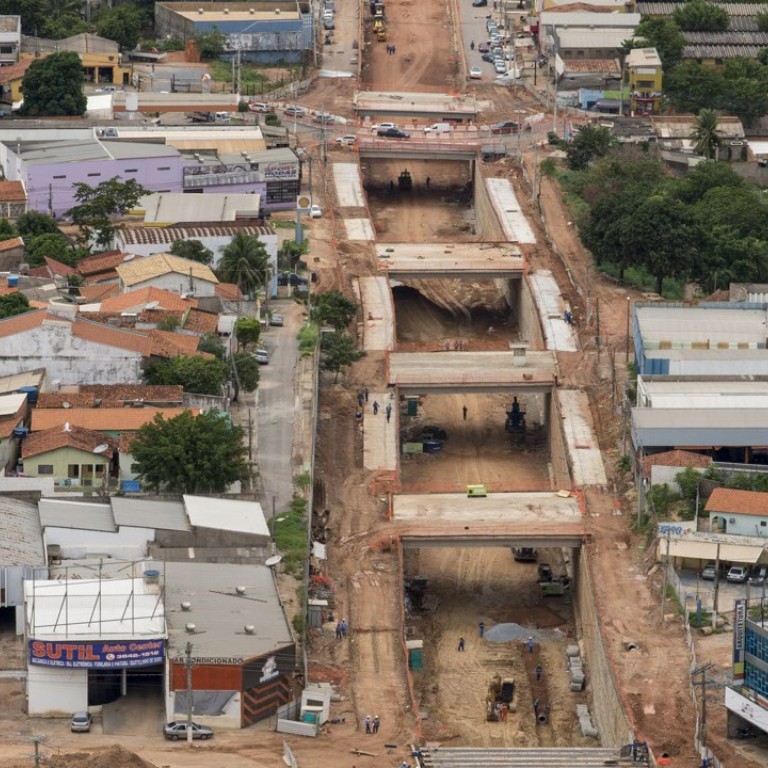
Things could be worse for China: just ask Brazil
Underinvestment in infrastructure worse than an asset bubble
China has so far avoided the thunderous crash many have long expected, given its multi-year investment spending boom of historic proportions.
A crisis might still be in the cards but, meanwhile, let’s shift our gaze to Brazil. That country’s recent woes offer a reminder that as economic planning mistakes go, there may be worse things than an asset bubble, even one as grand as China’s, with its overlapping infrastructure from cement to steel-making, bullet trains competing with mushrooming airports, and thousands of kilometres of quiet, scarcely used highways.
And that worse thing may be the opposite: underinvestment in infrastructure.
At a quick glance, it would seem that Brazil is simply a victim of China’s declining appetite for commodities. In fact, if it were not for the woeful state of its infrastructure, the resource-blessed country would be dealing much better with the collapse in global commodity prices.
Credit Suisse has estimated that Brazil’s inadequate capital stock subtracts 10 per cent to 15 per cent from the country’s potential gross domestic product. The real killer, however, is the effect that bottlenecks and supply constraints have on inflation.
Brazil is dealing with double-digit inflation, which has forced the central bank to tighten monetary policy even as unemployment is on the rise
Overcapacity in China is deflationary: the risk is that with falling prices, heavily indebted companies will not be able to repay debt, kicking off a debt deflation cycle that ends in crisis. This is a classic dilemma but at least it has a classic solution: the Chinese central bank has been able to respond to deflation and slowing growth by easing policy rates. Indeed, some China optimists are already starting to throw around the term “deflationary boom”.
In contrast, Brazil is dealing with double-digit inflation, which has forced the central bank to tighten monetary policy even as unemployment is on the rise and the economy is set to shrink by 3 per cent this year
For sure, the list of culprits behind the famous “Brazil cost” is long and includes high fiscal deficits, red tape and corruption. But one key factor is poor infrastructure, which delays goods transport, drags down productivity and keeps prices high due to supply constraints in everything from hotel rooms to office space.
“Inadequate infrastructure is increasingly identified as the key bottleneck behind low productivity, stagnating export performance, insufficient domestic market integration, and weak growth potential,” the International Monetary Fund said in a country report on Brazil earlier this year.
The IMF found that a price shock for a tradable good in a Brazilian city takes much longer to disappear than in the United States or China. This is due to poor linkages and long travel times between cities and regions in the sprawling and populous country.

Capacity constraints remain a problem even as the boom has quieted. Most obviously, poor infrastructure limits other types of stimulus that can be implemented. For example, the Brazilian government has put pressure on banks to extend credit to consumers in a bid to boost consumer spending. As a result many households have multiple electrical appliances, bought on credit, and no doubt are thoroughly enjoying the convenience.
Unfortunately, the electricity infrastructure could be better equipped to deal with this demand. Coverage is near universal, but the grids are faulty; distribution losses have increased and now exceed 15 per cent of electricity output. In comparison, China loses just over 5 per cent of its electrical output in distribution, which is in line with developed countries such as the US and Australia.
One might point to India as a counter-example. Here is a country with an economy now growing at 7 per cent to 8 per cent annually despite its famously inadequate infrastructure. Yet, as the accompanying chart shows, India, much poorer than Brazil, is surprisingly rated higher for overall infrastructure efficiency.
There are worse economic sins than building too much – and that includes building too little. Inflation-prone India is currently benefitting from the commodities bust, which has relieved fiscal pressures and allowed for a relatively dovish monetary stance; it should use the opportunity to hammer away.
Cathy Holcombe is a Hong Kong-based financial writer

